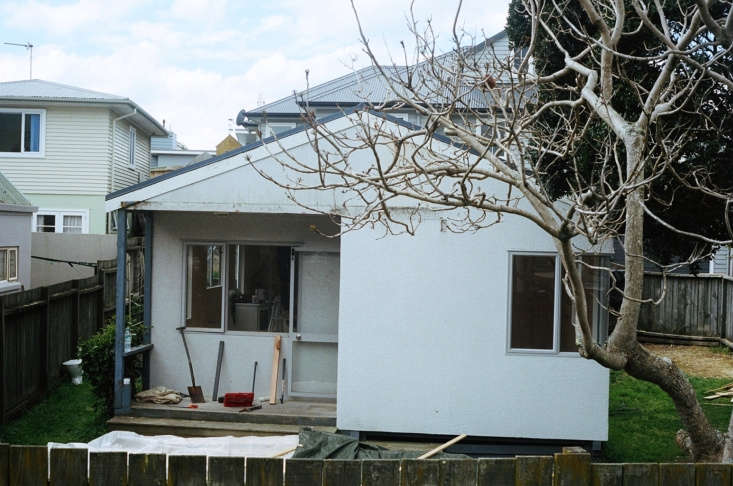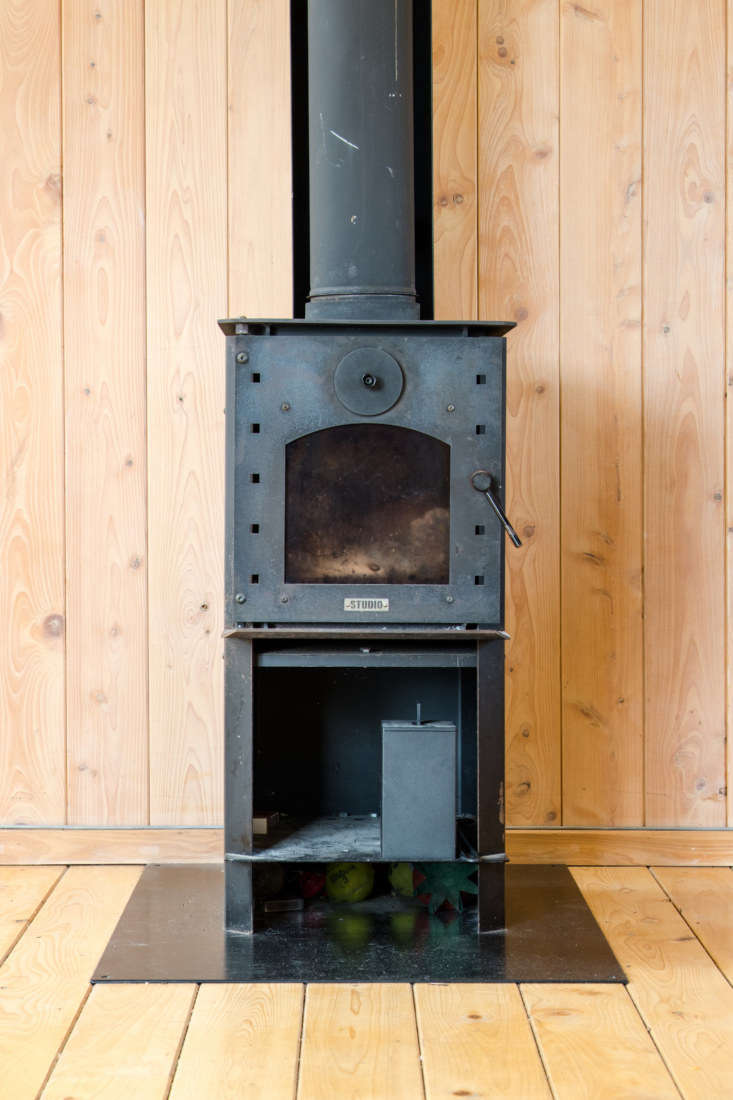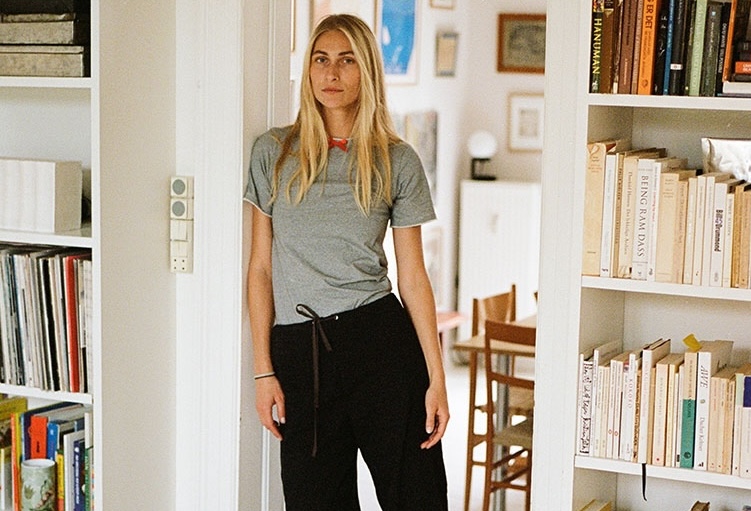This week we’re revisiting some of the most popular DIY stories from our archives. Read on for end-of-summer project inspiration:
Remodelista regulars no doubt have admired the work of George & Willy. They’re the charming, young New Zealander duo who made their design debut with the Studio Roller, a hanging roll of kraft paper for keeping To Do lists and making sketches. Since then, George Wilkins and Will McCallum have gone on to offer a suspended clothes drying rack, a fire starter inspired by Alaskan whalers, and a collection of signs including a Scrabble-like letter board.
Their creations are all about modern utility paired with a delightful Down Under playfulness. They sum up their M.O. as “making your space exciting”—which led us to be curious about their own quarters. For the last 18 months, we’ve been told they’d soon be ready to unveil the first George & Willy remodel: the two have been working with friends on a house for George and his wife, Hannah. Built in 1991, the structure—”tiny, nondescript, and uninspired,” says George—was priced right and had potential: to them it was begging to be transformed into an urban cabin. That required these first-timers to panel just about every surface inside and out. Come see.
Photography courtesy of George & Willy.

They say the overall layout of the house “was actually not bad and didn’t require too much changing,” but the plasterboard exterior and landscaping called for a total overhaul. In addition to cladding the structure in macrocarpa, an evergreen that’s a less-pricey alternative to cedar, they built a picket fence (to keep in George and Hannah’s dog, Frida) and a wooden walkway that, George says, “gives the feeling of being on a bushwalk every time you enter the house.”



George tells us they finished the exterior paneling with tung oil, “a natural product that unfortunately hasn’t worked as well as we would have liked because it doesn’t have mold inhibitors in it, so the timber has developed a slight mold. We got a cleaning product from the company that sold us the cladding oil that we’re going to use and then recoat; over time the wood will gray off nicely.”

Here’s George’s story of how they stumbled on a big cost break: “I called the sawmill ten days before we were starting work to order the timber and was told there was an eight-week lead time, which left us with quite a problem. While I was pondering what to do, I got a call back saying that the mill had a pile of seconds timber that we could have for a quarter the price. We ended up using that which was great.”


The indoor swing is a quintessential George and Willy touch. “We design in tandem,” George tells us, “but Will is more on the ideas side of things and I’m the practical one, so, for example, Will designs the swing and I design how it’s going to be fixed so it’s strong enough.”








Before and In Progress



Browse our archives for more favorite Cottage & Cabins, including:
- O Canada: Mjölk’s Renovated Scandi-Style Cabin on a Lake
- A Tiny (but Glamorous) Seaside Cabin on the Riviera
- Off the Grid Retreat: Anthony and Phoebe Dann’s Homemade Cabin in Australia
Frequently asked questions
Who is the designer behind the George & Willy DIY Remodel Urban Cabin?
The George & Willy DIY Remodel Urban Cabin was designed by Ben Mitchell.
What is the purpose of the George & Willy DIY Remodel Urban Cabin?
The purpose of the George & Willy DIY Remodel Urban Cabin is to provide inspiration and guidance for individuals looking to remodel their urban cabins in a creative and cost-effective way.
Where can I find the DIY plans and instructions for the George & Willy Remodel Urban Cabin?
You can find the DIY plans and instructions for the George & Willy Remodel Urban Cabin on the official George & Willy website.
What materials are required for the George & Willy DIY Remodel Urban Cabin?
The cabin materials include plywood sheets, galvanized pipe, screws, bolts, washers, hinges, nails, and various tools such as a saw, drill, and sander. The specific measurements and details can be found in the DIY plans.
How long does it take to build the George & Willy DIY Remodel Urban Cabin?
The time required to build the cabin depends on your skill level and available time. It can typically take a few days to a week to complete the project.
Is the George & Willy DIY Remodel Urban Cabin suitable for beginners?
Yes, the George & Willy DIY Remodel Urban Cabin is designed to be beginner-friendly, with clear instructions and simple materials. However, some basic woodworking skills and use of tools are recommended.
Can the George & Willy DIY Remodel Urban Cabin be customized?
Yes, the cabin design can be customized to suit your preferences and needs. You can modify the dimensions, color, and add or remove features as desired.
Is the George & Willy DIY Remodel Urban Cabin portable?
The cabin is not originally designed to be portable. However, with some modifications and careful disassembly, it can be relocated.
Is the George & Willy DIY Remodel Urban Cabin suitable for outdoor use?
The cabin is primarily designed for indoor use. While it can withstand some outdoor elements, it may require additional weatherproofing or modifications if intended for extended outdoor use.
Can I use the George & Willy DIY Remodel Urban Cabin as a permanent living space?
The cabin is not designed for permanent living, but rather as a small escape or guest space. It is important to check local regulations and obtain necessary permits if you plan to use it for any specific purpose.









Have a Question or Comment About This Post?
Join the conversation